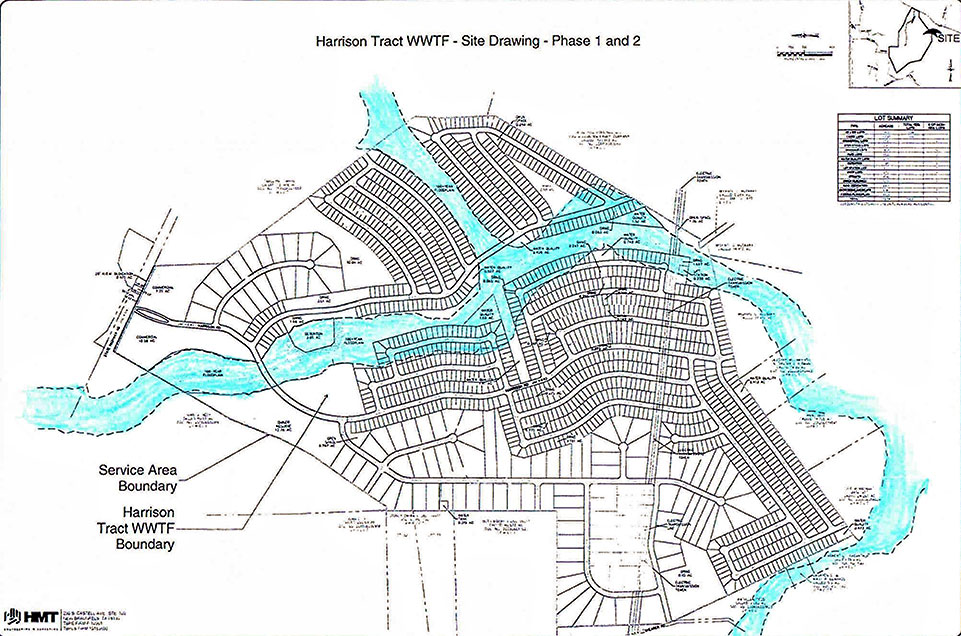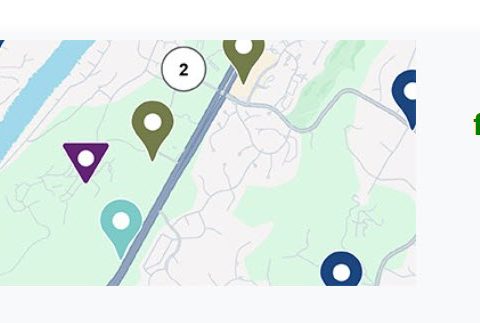A Comal County landowner who opposes a Texas Commission on Environmental Quality (TCEQ) air-quality permit granting Vulcan Materials the right to turn a neighboring property into a 1,500-acre limestone quarry squares off against his former allies at a 7 p.m. Thursday public meeting about his proposed Harrison Tract Waste Water Treatment Facility.
The TCEQ meeting over Doug Harrison’s controversial bid for a TCEQ wastewater permit for his property is at Smithson Valley High School cafeteria, 14001 Texas Highway 46, Spring Branch. Harrison said there is a 50-50 chance he will attend the meeting.
Environmental groups who stood with Harrison over the air-quality permit issue are asking members of the public to pack the hearing and speak against his request for a 600,000 gallon-per-day wastewater permit during a formal comment session on Thursday. They have prepared these pointers on the procedure for speaking at the meeting.
Harrison is considering the potential sale of 550 acres of land he owns at 1000 Harrison Rd., New Braunfels. That property shares a fenceline with Vulcan Quarry.
While Harrison has not changed his opposition to the open-pit limestone quarry, he thinks the development of the site is unavoidable and that has “clearly impacted” his decision to evaluate the potential sale of his own property.
To maximize his sales price, Harrison said he is pursuing “entitlements” for water, wastewater and power and is asking the TCEQ for a wastewater permit to release up to 600,000 gallons of treated sewage per day into the West Fork Dry Comal Creek and Dry Comal Creek.
“The discharged water will be treated to a reuse standard, and virtually all of it will be consumed on the property,” he said.
His land is located south of Highway 46 between Smithson Valley Road and FM 3006 in Comal County, and across the street from the Meyer Ranch subdivision.
Harrison said lots there are valued at $100,000 each by the Comal County Appraisal District.
Both West Fork Dry Comal Creek and Dry Comal Creek flow directly into the Comal River near Landa Park in New Braunfels, which is why community leaders and environmental activists who aligned with Harrison over the air-quality permit have decorated their Facebook posts and flyers about his wastewater permit with poop emojis.
They’re fighting Harrison with the same zeal used to block Vulcan Quarry and say the daily dumping of an Olympic-sized pool’s worth of sewage into a river that attracts thousands of tubers each year isn’t a good look for tourism or a healthy choice for the environment.
According to community leaders and environmental groups like Stop 3009 Vulcan Quarry and Preserve Our Hill Country Environment, the discharge location would be over the Edwards Aquifer contributing zone, near cave systems and just 2,000 feet upstream from the environmentally sensitive recharge zone.
Annalisa Peace, executive director of the Greater Edwards Aquifer Alliance, a watchdog group that advocates for the protection and preservation of the Edwards Aquifer, describes Harrison’s plans for his property as “an ill-advised project.”
In an email to over 50 member groups she said she’s used to reviewing development site plans that are “far too dense for some of the environmentally fragile sites they want to occupy. But, my eyes popped when I saw this one.”
Plans filed by Harris include the potential construction of 1,400 homes and the development of additional commercial tracts on his property.
“It looks like 110 of these homes will be built in the flood plain of the Dry Comal Creek,” Peace said.
For his part, Harrison said he toured New Braunfels Utilities (NBU) Gruene Water Reclamation Facility (GWRF), which is located upstream from the utility’s intake point on the Comal River.
“It seems like a funny backward thing,” he said. “The water plant discharge is upstream from where they take the water out. The solution is to treat the water to the reuse standard…so whatever water does go back will be cleaner than what runs down the creek during rainfall.”
He said there are “beautiful” neighborhoods surrounding quarries in New Braunfels and San Antonio that continue to “grow and thrive even though they’re next door.”
According to NBU Communications and External Affairs Manager Pam Quidley, GWRF was completed in September 2020 with a permitted treatment capacity of 2.5 million gallons per day and has two significant large-sewer interceptors required to accommodate new growth in NBU’s system.
However, Sarah Mercer, founder of Save Our Hill Country, said Canyon Lake’s water provider, Texas Water Company, is listed on the standard permit application form.
“Area environmental groups are concerned that if SJWTX (now Texas Water Company) is the facility operator, the company will continue to repeat the pattern of non-compliance found at other wastewater treatment facilities the company operates,” she said in a press release.
Thomas Hodge, president of Texas Water Company, disagrees.
“We would like to comment on our part with, addressing that the effluent from the wastewater plant will undergo advanced treatment including disinfection before discharge,” he said. “We will also seek to reuse the majority of the treated water.”
David Drewa, communications director for Preserve Our Hil Country Environment, said Harrison should explore other options before requesting a permit to discharge wastewater into Hill Country creeks and aquifers.
“There are other options that would be much more protective of our water supply and ecosystem such as beneficial reuse, land application permit and treatment to potable standards,” he said.
TCEQ scheduled the hearing after public outcry and at the request of Texas House District 73 Rep. Carrie Isaac.
“It is my understanding there is a great deal of interest in this permit and I believe that a public meeting will serve all interested parties with an opportunity to get questions answered and vet concerns of all affected parties,” she said in a letter to Erin Chancellor, TCEQ acting director.
As with Vulcan Quarry, Thursday’s meeting could be just the beginning of another long legal slog between TCEQ and groups fighting to preserve the Hill Country environment.
Drewa said the original public-comment period ended on March 2. Harrison filed for a permit in September 2022.
“All spoken comments made at the public meeting during the formal comment period will be added to the record of public comments,” he said.
People can still submit written comments on the permit application to the TCEQ website until the conclusion of the public meeting on Thursday..
TCEQ will review all public comments — both written and spoken — and will issue a response to comments (RTC) and a permit decision between 60 and 120 days later.
The RTC will be mailed to everyone who submitted formal comments.
If Harrison’s permit is approved either partially or entirely, by law TCEQ is required to afford the public the opportunity to respond to the permit approval by requesting a contested-case hearing, which is similar to a civil trial.
Drewa said if TCEQ grants a contested-case hearing it would likely take place sometime in 2024.




